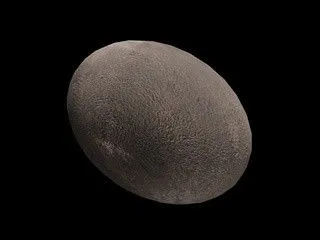Our Planets Found: Haumea
When found:
December 28, 2004.
By who:
Mike Brown, Chad Trujillo, and David Rabinowitz.
Description:
Haumea is a dwarf planet in the Kuiper belt, distinguished by its elongated shape and rapid spin.
Discovered in 2004 (with a competing claim in 2003 by a Spanish team), it was initially designated as a trans-Neptunian object and considered for planetary status amid the ongoing debates triggered by Eris and similar bodies. In 2008, the International Astronomical Union (IAU) officially named and classified it as a dwarf planet, acknowledging its hydrostatic equilibrium but noting it has not cleared its orbital neighborhood.
With dimensions of about 2,100 × 1,680 × 1,074 km, it features a dense core of hydrated silicates, an icy mantle, and a surface primarily of crystalline water ice with a dark red spot likely containing organic compounds and minerals.
Distance from Earth:
Closest distance: approximately 3.2 billion miles.
Length of Year & Day:
Year: 103,410 Earth days (about 283 years).
Day: 3.9 hours.
Interesting fact:
Haumea possesses a unique ring system, the first discovered around a trans-Neptunian dwarf planet, and its extreme shape results from a massive ancient collision that also birthed its two moons and a family of related icy bodies.
Like its Finder:
Like Mike Brown, a pioneering astronomer at Caltech whose systematic searches unveiled numerous outer Solar System wonders and fueled redefinitions in astronomy, Haumea whirls rapidly in its distinctive form, symbolizing the violent collisions and transformative forces that sculpt the distant cosmic landscape.
